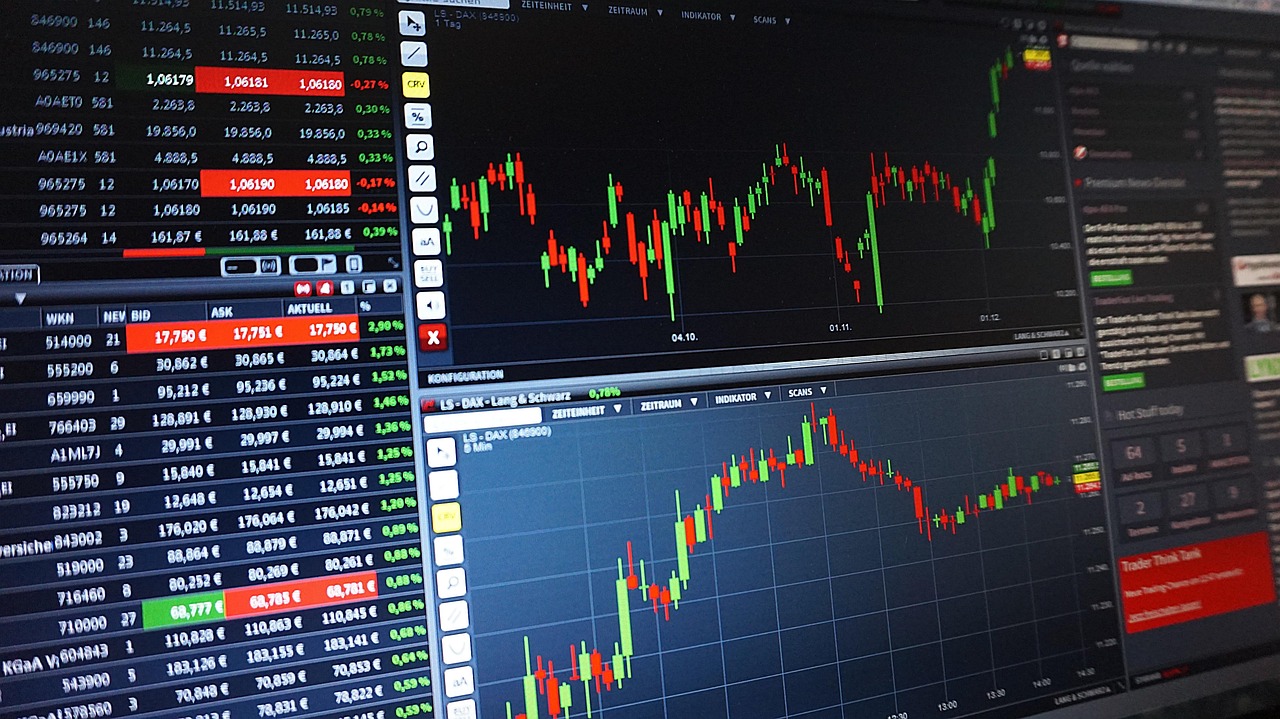
What Makes a Good Trading Strategy in 2025? Trends, Tools, and Tips
Trading in 2025 looks nothing like it did even five years ago. The old playbook of chart patterns, gut instinct, and CNBC commentary hasn’t disappeared entirely, but it’s been fundamentally reshaped by technology that was science fiction a decade ago. I’ve watched retail traders go from being price takers to sophisticated market participants armed with tools that were once exclusive to hedge funds.
So what actually makes a trading strategy work today? Let’s dig into the trends reshaping the landscape and the practical tools that separate profitable traders from those still chasing yesterday’s signals.
The AI Revolution: No Longer Optional
Here’s the uncomfortable truth: if your trading strategy doesn’t incorporate some form of artificial intelligence or machine learning in 2025, you’re bringing a knife to a gunfight. But before you panic, understand that AI-powered doesn’t mean you need a Ph.D. in computer science.
Modern AI trading tools have become remarkably accessible. They’re analyzing millions of data points (news sentiment, social media trends, options flow, macroeconomic indicators) faster than any human ever could. The edge isn’t in having access to information anymore. Everyone has that. The edge is in processing speed and pattern recognition.
What I find fascinating is how AI has democratized quantitative analysis. Ten years ago, building a quantitative model required a team of mathematicians and programmers. Today, platforms are offering retail traders access to sophisticated algorithms that can backtest strategies across decades of market data in seconds.
The catch? AI isn’t a magic money printer. The best traders I know use AI as a co-pilot, not an autopilot. They let the algorithms identify patterns and opportunities, but they apply human judgment to the final decision. Markets are still driven by humans, and sometimes the best trade is the one your model says to take, and sometimes it’s knowing when to override it.
Quantitative Models Go Mainstream
Remember when quant trading was synonymous with Renaissance Technologies and other mysterious hedge funds? That era is over. Quantitative approaches have filtered down to retail traders, and honestly, it’s about time.
A good quant model in 2025 isn’t just about finding statistical arbitrage opportunities. It’s about building robust systems that account for market regime changes. Bull markets behave differently than bear markets. High volatility environments punish strategies that thrive in calm waters. The models that work now are adaptive, not static.
The backbone of successful quant strategies today includes multi-factor analysis that goes beyond simple technical indicators. We’re talking about combining momentum, value, volatility, and sentiment factors in ways that capture edge across different market conditions. Real-time risk management gets baked into the model itself. Stop losses aren’t just price levels anymore. They’re dynamic, adjusting based on volatility regimes and correlation shifts.
Alternative data integration pulls from sources beyond price and volume. Satellite imagery of retail parking lots, credit card transaction data, shipping container movements… this stuff isn’t just for institutional players anymore.
But here’s what separates amateurs from professionals: understanding when your model breaks. Every strategy has an expiration date. Market microstructure changes, liquidity profiles shift, and what worked brilliantly in 2023 might be giving back gains in 2025. Good traders are constantly monitoring their strategy’s edge and aren’t afraid to shut things down when the numbers stop working.
The Evolution of Retail Trading
The retail trading revolution didn’t start in 2025, but it’s reached maturity. The meme stock frenzy of 2021 feels like ancient history now. What’s emerged is a more sophisticated retail trading community that’s less about diamond hands and moon shots, more about systematic approaches and risk management.
This evolution has been powered by platforms that treat retail traders like the serious market participants they’ve become. We’re seeing features that were institutional-only just a few years ago: advanced order types, sophisticated charting with custom indicators, paper trading environments that mirror real market conditions, and educational resources that go way beyond buy low, sell high.
Take platforms like SageMaster, for example. It represents this new generation of analytical tools, giving traders access to market insights, pattern recognition, and data visualization that helps them make informed decisions rather than emotional ones. The emphasis has shifted from trade more to trade smarter.
Social trading has matured too. Instead of blindly following hot tips on Reddit, retail traders are now part of communities that share actual analysis, backtest results, and honest discussions about what’s working and what isn’t. The hype hasn’t disappeared, but it’s tempered by a growing culture of accountability and transparency.
What Actually Works in 2025: The Practical Stuff
Let me be direct about what makes a trading strategy genuinely effective right now.
Adaptability beats consistency. Markets cycle through regimes (trending, mean-reverting, high volatility, low volatility). Your strategy needs to recognize these shifts and adjust accordingly. A rigid approach that worked perfectly in 2024’s market might be disastrous in 2025’s conditions.
Risk management is still king. I cannot stress this enough. The flashiest AI model in the world won’t save you if your position sizing is reckless. Professional traders obsess over maximum drawdown, win rate versus average win/loss size, and correlation between positions. The goal isn’t to never lose. It’s to lose small and win big.
Speed matters, but not how you think. You don’t need high-frequency trading infrastructure. But you do need fast access to information and the ability to execute quickly when your setup appears. Latency in data feeds or clunky platform interfaces can cost you real money.
Diversification across strategies, not just assets. Holding stocks and bonds isn’t enough. You want strategies that profit from different market behaviors. Some momentum-based, some mean-reversion, some volatility-focused. When one approach struggles, another picks up the slack.
Continuous learning is non-negotiable. Markets evolve. New products emerge. Correlations shift. Traders who treat their education as finished are traders who wash out. The best performers I know are constantly studying, backtesting new ideas, and refining their approach.
The Tools in Your Arsenal
Building a modern trading strategy requires a tech stack. You don’t need everything, but you need the right things.
A robust analytical platform that provides real-time data, charting capabilities, and ideally some form of algorithmic support. Whether that’s TradingView, Bloomberg Terminal, or newer platforms like SageMaster that specialize in pattern recognition and market insights, your main platform is your command center.
Backtesting software that lets you validate ideas before risking capital. This isn’t optional anymore. If you can’t prove your strategy would have worked historically, you’re gambling, not trading.
Risk management tools that track your portfolio exposure, calculate position sizes, and alert you when you’re violating your own rules. Emotion is the enemy of good trading, and having automated guardrails helps.
Data feeds beyond just price. Sentiment analysis, options flow, insider trading data… these alternative data sources can provide edge that pure technical analysis misses.
A trading journal where you record every trade with the reasoning behind it. This sounds boring, but reviewing your decisions is how you identify patterns in your own behavior and improve over time.
The Psychology Factor: Still Human After All
Here’s something that hasn’t changed and won’t change: trading is a psychological game as much as a technical one. AI can process data, but it can’t feel the panic when your position moves against you or the euphoria when everything’s working.
Successful trading in 2025 requires emotional discipline that technology can’t provide. You need to follow your system even when it feels wrong. You need to cut losses even when you’re convinced the market is wrong. You need to take profits even when it seems like the move has more room to run.
The best traders I know have developed almost boring consistency in their execution. They don’t chase excitement. They don’t revenge trade after losses. They show up, follow their process, and accept the results whether good or bad.
Looking Forward
So where does this leave us? Look, I’m not going to tell you that trading has become easy. It hasn’t. If anything, it’s gotten harder because everyone else has access to the same tools you do. But that’s actually good news if you think about it differently.
The traders making money in 2025 aren’t the ones with the fanciest algorithms or the most expensive data feeds. They’re the ones who’ve figured out how to use these tools without letting them do all the thinking. They’ve built strategies that can handle getting punched in the face by the market and still come back for more.
Here’s what I’ve noticed: the people chasing 500% returns in a month are the same ones who blow up their accounts and disappear. The ones who stick around? They’re focused on building something that works in February when nothing’s happening, in May when volatility spikes, and in November when everything correlates to one.
You don’t need to be smarter than the market. You just need to be more disciplined than your past self. That means doing the boring stuff. Keeping a journal. Actually reviewing your trades instead of just moving on to the next one. Admitting when something isn’t working and shutting it down before it bleeds you dry.
The tools are there. AI, quant models, platforms like SageMaster that give you institutional-grade analytics. But tools are just tools. A fancy hammer doesn’t make you a carpenter. What makes you a trader is showing up every day, following your process when it sucks, and being honest about what’s working and what isn’t.
The market doesn’t care about your strategy, your tools, or your opinions. It’s going to do what it does. Your job is to be ready for whatever comes next, take your losses like an adult, and be positioned to capitalize when your edge shows up. That’s it. That’s the whole game.
